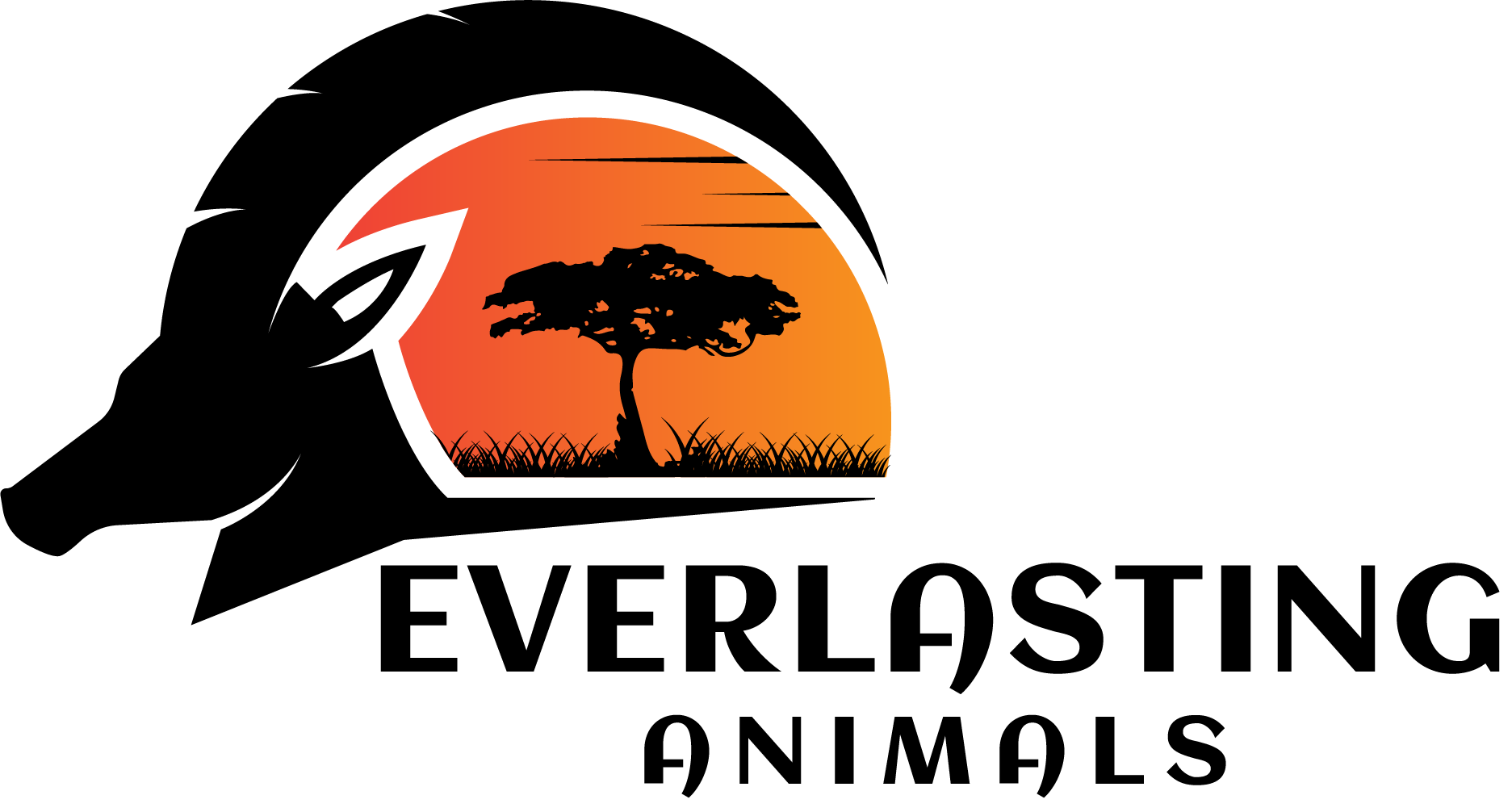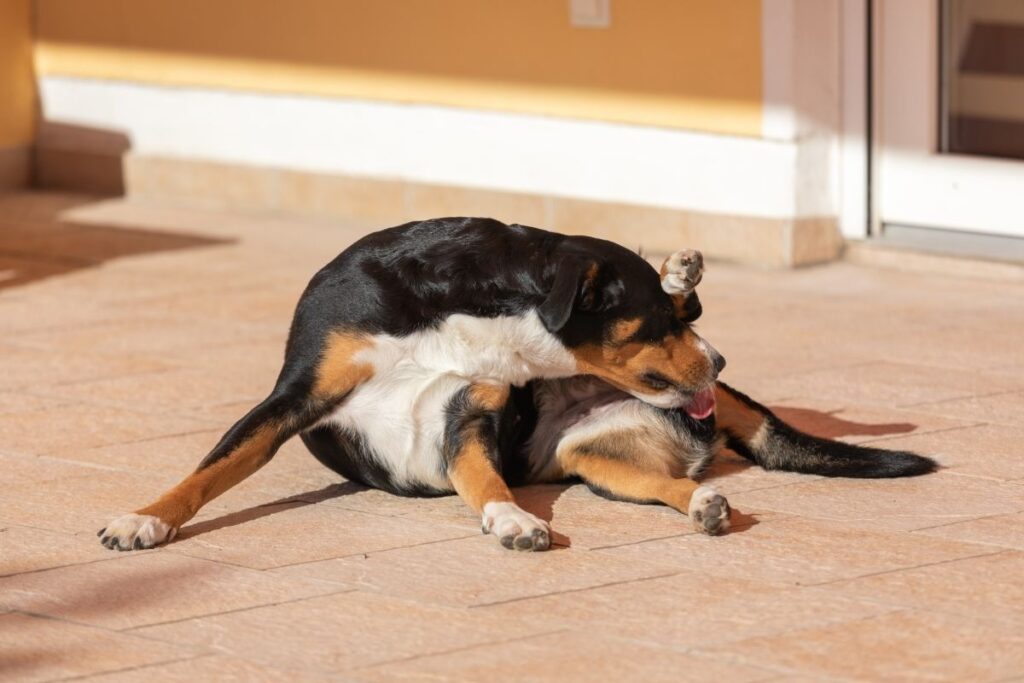What is Testicular Torsion and Swelling in Dogs?
Testicular torsion in dogs is an uncommon condition but still has an appearance in veterinary clinics every so often. It is a twisting or a kinking of a tubular structure known as a spermatic cord due to one or both testicles rotating within the scrotum (the sac).
Testicular swelling is a swelling of the testicles or parts of testicles, including the epididymis, which is attached to the back of each testicle.
Signs and Symptoms of Testicular Torsion in Dogs
Pain and discomfort with movementReluctant to moveListlessnessAbnormal swelling of the affected testis or the scrotumDiscoloration (darkening) of the scrotumFrequent licking of the scrotum or surrounding areaLethargyInappetenceVomiting Pyrexia
What are the Reasons Behind Testicular Swelling in Dogs?
Solid mass edema, a local tissue inflammation, and testicular torsion can cause testicular swelling in dogs, and its nature differentiates it.
A solid mass can be a product of the tumor growth of a cell/cells within the scrotum/testicle as the testicles are made up of multiple types of cells, each of which can become cancerous. The most common testicular tumors are Sertoli cell tumors, interstitial (Leydig) cell tumors, and seminomas. They can come in different sizes and can be benign or malignant tumors.
Edema is a fluid-filled swelling. It can be a cyst with cystic fluid hematoma with blood or an abscess with a purulent (pus) material.
Types of inflammation responsible for testicular swelling are orchitis (inflammation of one or both testicles), epididymitis (inflammation of the epididymis), and sperm granuloma. Epididymitis in dogs is a more common occurrence than orchitis, but it can occur concurrently with orchitis.
The torsion can cause a restriction or a blockage of the blood flow, the nerve pathway, and the lymphatic pathway since the spermatic cord consists of major blood vessels, nerves, lymph, muscles, and Vas Deferens.
Trauma and infection are common triggering factors of edema and inflammation. The canine testicular infection can be divided into bacterial, fungal, and viral.
Bacterial
Pathogenic bacteria often found as a source of testicular infection are Brucella and Ehrlichia canis.
Brucella is commonly transmitted by a dog exposing itself to an infected animal’s urologic materials such as urine, semen, or vaginal fluid. The vertical transmission (a mother dog to her pups prepartum and postpartum) is less common but can occur.
Ehrlichia Canis is a tick-borne disease, and therefore the transmission requires the infected tick to bite and break the dog’s skin. The brown dog tick (Rhipicephalus sanguineus) is the primary carrier of this bacterial species.
Fungal
Inhalation of soil fungi such as Coccidioides and Blastomyces can lead to a systemic infection, where the organisms spread throughout the body and affect multiple organs, including the reproductive tract.
Viral
Distemper is a disease caused by a paramyxovirus that affects various animals, including dogs. The dogs can contract the disease from contact with a body fluid such as urine, blood, saliva, or respiratory droplets of the infected animals.
Causes of Canine Testicular Torsion
Are you worried about your dog? Are you wondering, “what does the inside of balls look like?” Then, let’s talk about dog testicle anatomy!
Normal dog testicles are bean-shaped structures. On the back of each testicle, the epididymis (storage of the sperms) is attached. The epididymis is connected to a tubular network called Ductus Deferens (a spermatic cord) by Vas Deferens.
Ductus Deferens connects the epididymis and the prostate gland in the lower abdominal cavity. The dog testicles descend and usually are located within the scrotum once reaching sexual maturity, which is roughly about five months of age (it can be varied between breeds).
However, there are cases of dogs with undescended testicles even when it is time, and they are expected to descend into the scrotum. This condition is called cryptorchidism. If the dog has one undescended testicle, then the dog is said to have a unilateral cryptorchid. If both testicles are retained, it is known as a bilateral cryptorchid.
Testicular torsion is commonly associated with a deformed, cancerous, or a cryptorchid testicle. These testicles are more prone to move freely and rotate themselves within the scrotum or the lower abdominal cavity.
The deformity may be congenital, acquired in nature, or secondary to an underlying issue. Most commonly seen testicular deformities are testicular hypoplasia in young dogs and testicular degeneration/atrophy in older dogs. These have a similar presentation where the testicles are significantly small.
Other deformities may include inguinoscrotal hernia and aplasia of the epididymis.
Some breeds are more susceptible to developing tumors or cryptorchidism than others.
Breeds that are predisposed to testicular tumors are Afghan Hounds, Boxer, Collie, English Bulldog, German Shepherds, Maltese, Miniature Schnauzer, Pekinese, Shetland Sheepdogs, Toy/Miniature Poodle, and Weimaraners.
Breeds predisposed to cryptorchidism are Chihuahua, Dachshund, German shepherd, Miniature Schnauzer, Poodle, Pomeranian, Shetland sheepdog, Siberian husky, Yorkshire terrier, and a majority of brachycephalic breeds.
Still, the important thing to remember is that the aforementioned condition can happen to any dog regardless of its breed.
How is Testicular Torsion in Dogs Diagnosed?
Preliminary diagnosis is supported by a thorough clinical history and findings from a physical examination. The veterinarian will likely visualize and palpate the scrotum region and the surrounding region.
However, further diagnostics (listed below) may be required to establish a definite diagnosis, determine the severity and identify any underlying issue that triggered the torsion:
Abdominal radiographs can identify any mass soft tissue abnormality associated with the testicular region. Scrotal ultrasound to check blood flow within the region. This can confirm the torsion and any suspicious lesion or mass within the area. Blood analysis and urinalysis to determine any systemic impacts and underlying issues.Cytologic examination of seminal fluid to evaluate the functionality of the testes and associated organs.Cytological evaluation of testicular structures (epididymis and the scrotum) by taking a sample from the swelling, using the fine needle aspiration technique. Possible testicular biopsy for a histopathological examination, under sedation or general anesthesia.
Treating Testicular Torsion in Canines
Testicular torsion is considered a medical emergency, and the treatment of choice is castration or surgical removal of the affected testicle. This will provide instant relief and prevent the recurrence of the problem in the future.
If removing the affected testicle is not an option for you, medical therapy and supportive care may be sought.
It is important to treat or manage any primary issue that has led the dog to testicular torsion. Whether it is a traumatic wound or an infection, the affected dog will require a course of medications to relieve the pain and other medicines to target any pathogenic species responsible for the infection.
It is important to inform your veterinarian if you plan to keep your dog intact for a breeding purpose, as some medications can interfere with spermatogenesis (production of sperms).
It is beneficial to have a sample from the infected area taken to be sent off to a pathological laboratory and get appropriate testing done to refine the treatment plan after finishing a course of medications if there is no improvement.
You can offer cold therapy at home by applying an excellent pack onto the inflamed region to help reduce the swelling and heat while the dog is recovering.
Prognosis, Outcome, and Recovery of Testicular Torsion in Dogs
The prognosis depends on the reason for torsion and the choice of treatment.
Surgical intervention and medical therapy are known to provide a good outcome, and the affected dog generally recovers well. However, the dog will lose its reproductive ability and be infertile for the rest of its life.
Medical therapy and supportive care may be able to provide therapeutic relief and possibly untwist the torsion in some cases. However, the possibility of the affected dog regaining normal fertility is very low in chronic cases.
If the torsion has caused ischemic damage, necrosis of the testicular tissues will likely occur, and infertility is inevitable. The prognosis of the dog with an infection depends on the type of the infection.
Preventing Testicular Torsion in Dogs
The best preventive measure is desexing your dog as soon as it is old enough to have the procedure.
It may be a good idea to perform a head-to-toe check on your dog a minimum of twice a day, in the mornings and evenings, so that you can familiarize yourself with his normal anatomical/physiological features. In this way, you will likely visually pick up abnormalities, even very subtle changes.
For example, you would be able to visualize the dog’s scrotum becoming fuller in appearance, although dogs with Cryptorchidism would likely have a less filling scrotum. This is especially true for the dog with bilateral cryptorchidism (cryptorchid of both testicles).
Regular veterinary check-ups from the early age of the dog can keep you informed about your dog’s reproductive status and help detect any abnormality associated with the reproductive organs, such as undescended testicles. Your veterinarian will advise the suitable option to resolve this abnormality if plausible.

